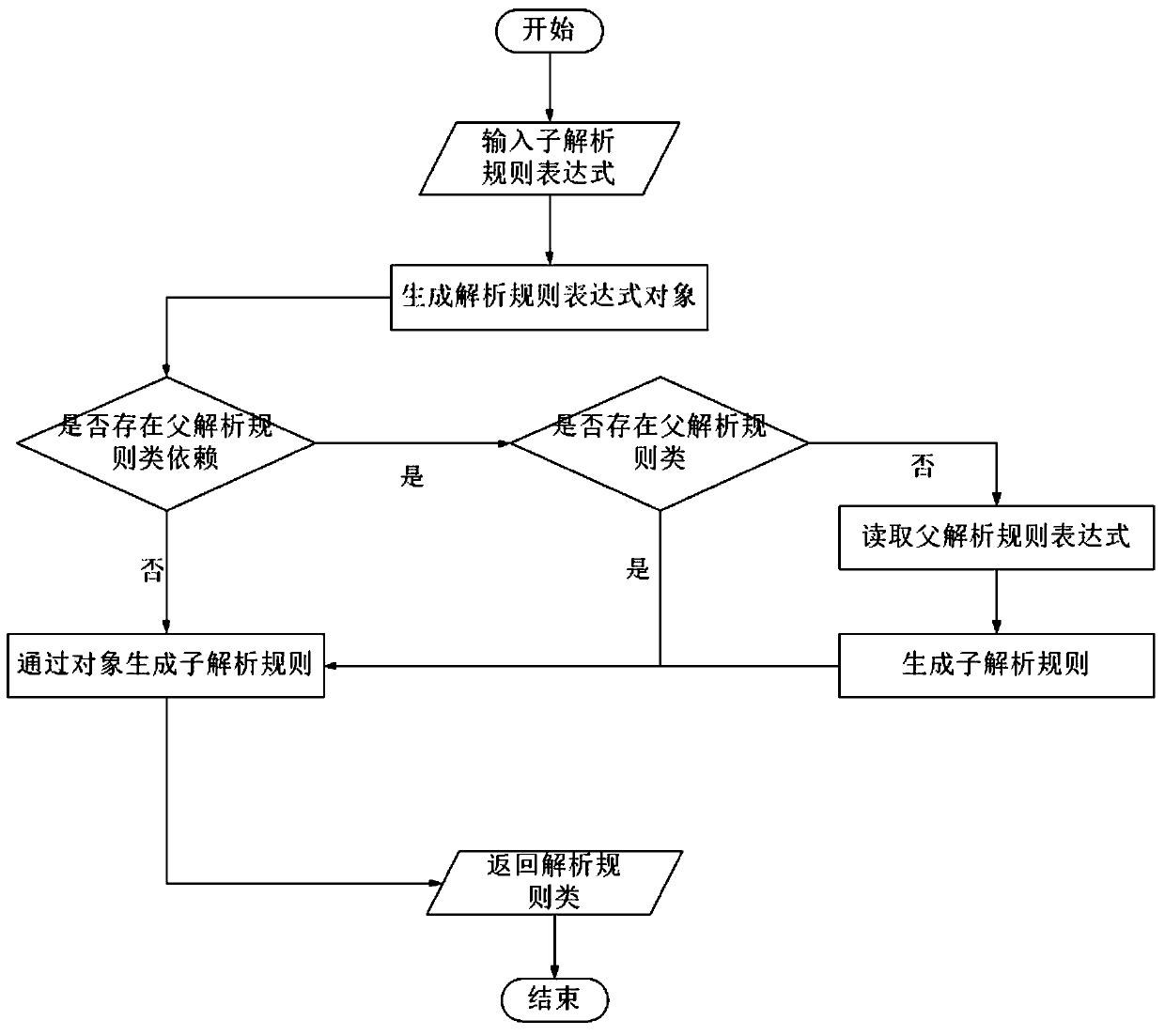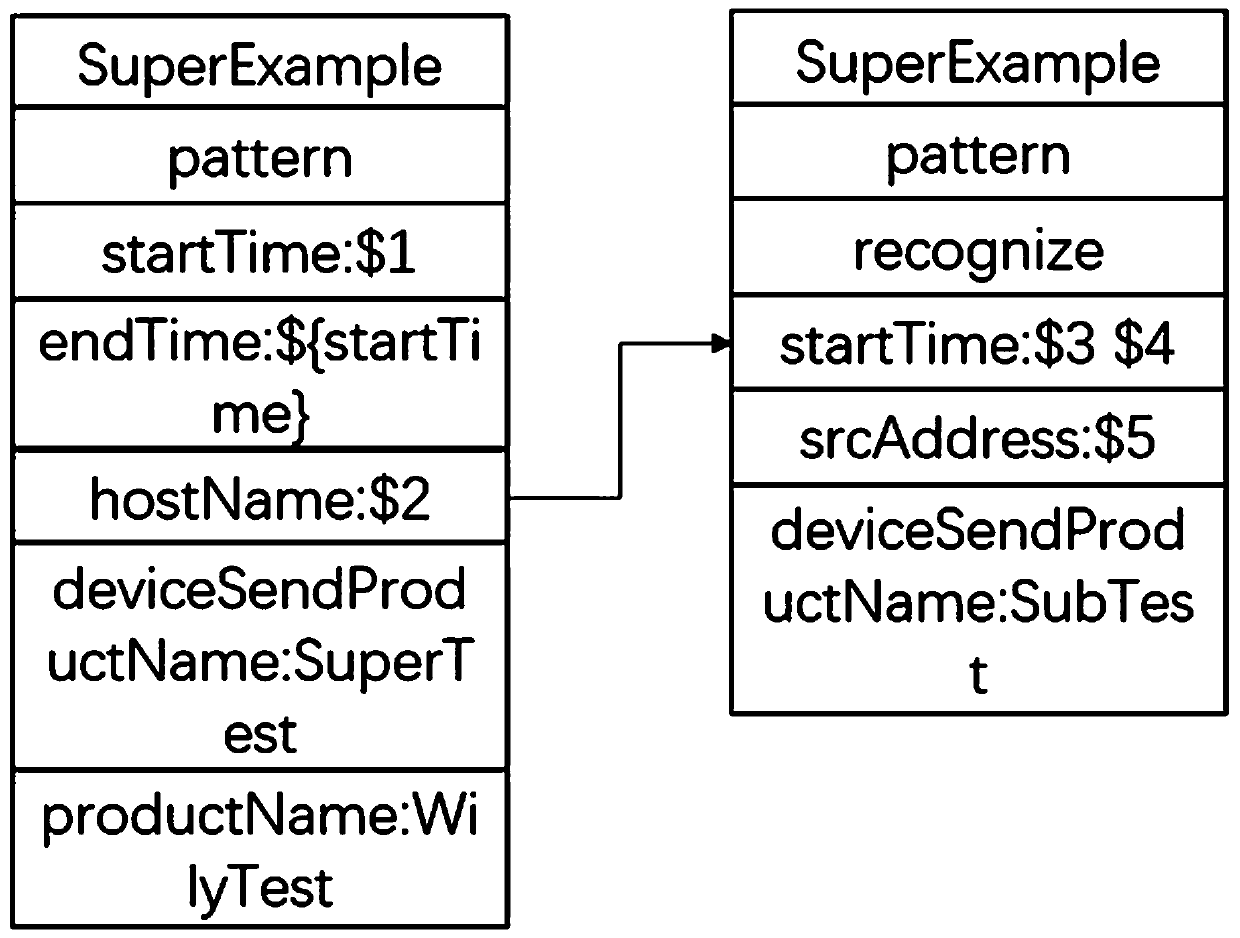Inheritable and extensible data processing method and application thereof to log analysis
A technology of data processing and processing methods, applied in special data processing applications, data exchange networks, digital transmission systems, etc., can solve problems such as relying on analysts, improve system performance, facilitate management and new additions, and reduce workload Effect
- Summary
- Abstract
- Description
- Claims
- Application Information
AI Technical Summary
Problems solved by technology
Method used
Image
Examples
Embodiment 1
[0048] This embodiment discloses an inheritable and extensible data processing method, including the following steps:
[0049] (1) Directly write the common parsing method in the log into a parent parsing rule;
[0050] (2) Build a correlation between the parent parsing rule and several sub-parsing rules, so that sub-parsing rules with different parsing expressions can directly obtain the parsing method in the parent parsing rule through inheritance;
[0051] (3) The parent parsing rules can be rewritten for the parsing methods in the child parsing rules that do not satisfy the parent parsing rules, so as to realize the expansion of the parent parsing rules.
[0052] Wherein, the common log parsing method in the step (1) includes the field assignment in the log and the field value in the log; the method in which the sub-parsing rule rewrites the parent parsing rule in the step (3) includes an analytic expression, field assignment.
Embodiment 2
[0054] This embodiment is based on the above-mentioned data processing method, which is applied to the analysis process of the diary, and the specific process is as follows figure 1 shown, including the following steps:
[0055] (1) Build the common parsing method in the log into a parent parsing rule class;
[0056] (2) input relevant sub-parsing rule expressions;
[0057] (3) Generate a corresponding parsing rule object according to the sub parsing rule expression;
[0058] (4) matching the parent parsing rule class according to the parsing rule object to generate corresponding sub-parsing rules;
[0059] (5) Load the generated sub-parsing rules into the system, then use them to parse the logs, and output the parsing results.
[0060] Wherein, in the step (2), the input parsing rule expression includes JSON format, XML format, YSML format, WDDX format.
Embodiment 3
[0062] On the basis of the above-mentioned embodiments, this embodiment further defines the specific process of generating corresponding sub-parsing rules, such as figure 2 as shown,
[0063] (3.1) According to the parsing rule object, it is judged whether there is a dependent parent parsing rule class in the generated rule;
[0064] (3.2) If there is a parent parsing rule class dependency, then determine whether the dependent parent parsing rule class has been generated;
[0065] (3.3) If the dependent parent parsing rule class has been generated, read the parent parsing rule class directly as the generated sub-parsing rule; if the dependent parent parsing rule class has not been generated, then generate by reading the parent parsing rule expression Sub-parsing rule class, and as a new parent parsing rule, add it to the original parent parsing rule class and save it;
[0066] (3.4) If there is no dependency on the parent parsing rule class, generate a new sub-parsing rule ...
PUM
 Login to View More
Login to View More Abstract
Description
Claims
Application Information
 Login to View More
Login to View More - R&D
- Intellectual Property
- Life Sciences
- Materials
- Tech Scout
- Unparalleled Data Quality
- Higher Quality Content
- 60% Fewer Hallucinations
Browse by: Latest US Patents, China's latest patents, Technical Efficacy Thesaurus, Application Domain, Technology Topic, Popular Technical Reports.
© 2025 PatSnap. All rights reserved.Legal|Privacy policy|Modern Slavery Act Transparency Statement|Sitemap|About US| Contact US: help@patsnap.com



